Mar 22, 2022
Jindai Botanical Gardens: Flowers with faces and other natural wonders
Gallery - Jindai Botanical Gardens, Chofu, Tokyo
Ever since its opening in the 1960s, Tokyo’s Jindai Botanical Gardens has been no stranger to superlatives and impressive statistics.
Tokyo’s first botanical garden covers an area of nearly 490,000 square meters in the city of Chofu, which is itself pretty remarkable when one considers the area's proximity to ultra-urban Shinjuku. The huge gardens are home to over 100,000 plants and trees covering nearly 5,000 species and are a regular feature on rankings of Japan's best parks.
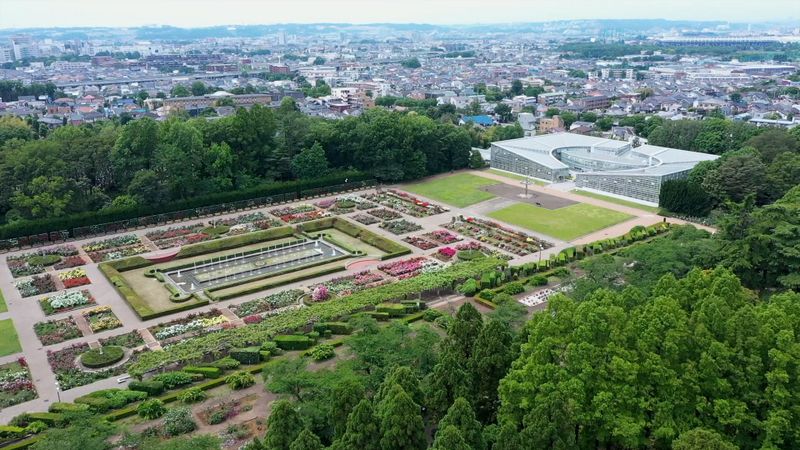
(Screenshot from drone footage showing an area of Jindai Botanical Gardens, Chofu, Tokyo. Footage taken on May 14, 2021.)
“For a place so close to the city, it's amazing. If you could fly a drone over it, or see it from above, it's like this corner of the city that's surrounded by nature, like a huge forest,” a member of the gardens' staff told us.
“It's great to have a place like this close to the city center where you can enjoy the scenery and forget that you're in Tokyo,” they said.
While regularly cited highlights of Jindai Botanical Gardens such as the early-spring cherry blossom viewing and a world-class rose garden might create an oh-so-civilized image of Tokyo’s well-to-do taking pictures of petals, the gardens also have a wonderfully playful and at times otherworldly weird side.
The gardens hit global headlines in 2015 when its bizarre Titan arum flower - one of the rarest and largest flowering plant species in the world - bloomed for the first time in four years. The event filled the gardens with both camera-toting, hobbying botanists and the smell of rotting flesh - the Titan arum also being known as the corpse flower not without reason.
At the time of writing, the flower last bloomed in 2021. This sensational (and smelly) blooming might serve to highlight some of the other curiosities that await discovery at Jindai Botanical Gardens. The best place to start looking is in the gardens’ Large Greenhouse, a facility that cares little for the seasons changing outside.
Now, if the term “greenhouse” conjures images of hobbying elderly parents attempting to grow tomatoes year-round, the experience of the Large Greenhouse here could well provide a delightful spark to light your imagination. Where Jindai’s gardens might whisk you away from Tokyo, the greenhouse will have you jet-setting around the globe and leave your head spinning.
The climate inside the Large Greenhouse at Jindai Botanical Gardens remains mostly warm and mostly humid, with the occasional dry spell. Six main rooms take visitors on a journey that begins in the steamy tropics and ends with the prickly plants of Chile’s dry lands.
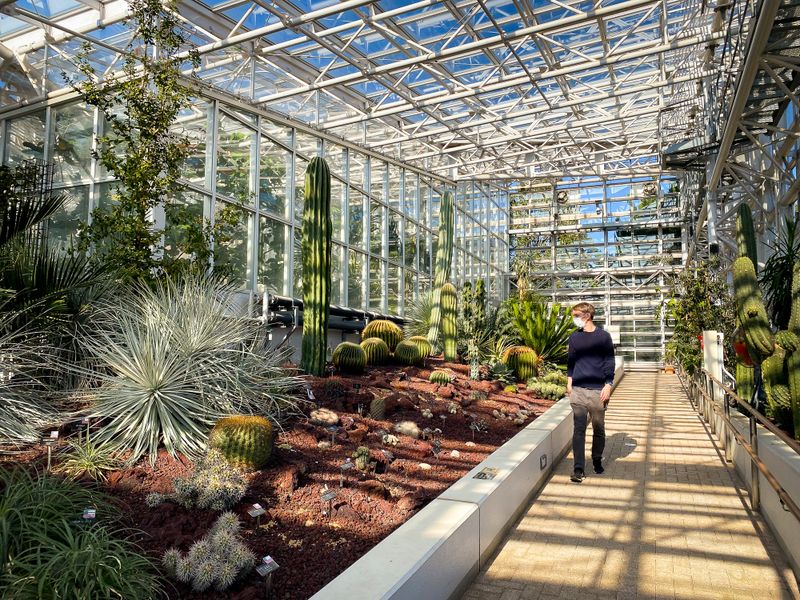
(Dryland Room in the Large Greenhouse of Jindai Botanical Gardens.)
Flowers with faces
In a space (and a large one at that) packed to the rafters with some of nature’s weirdest and most wonderful creations it can be hard to single out a particular species or variety for praise. That being said, who wouldn’t stop for a second glance at a flower bearing an uncanny resemblance to Darth Vader from Star Wars? Well, such a flower is here, having arrived not from the Death Star but instead courtesy of a plant native to El Salvador, central America.
Although the plant isn’t actually called the Darth Vader, it does have a name that perhaps wouldn’t be out of place in George Lucas’ universe - Aristolochia salvadorensis.
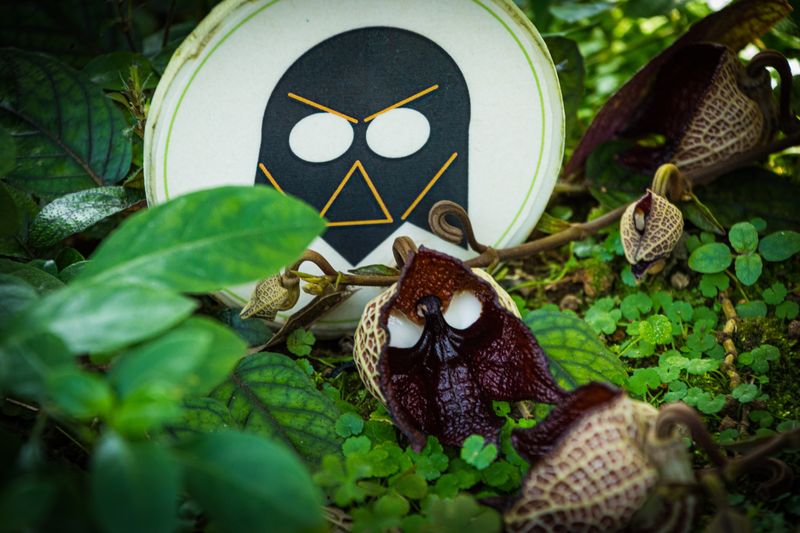
(Aristolochia salvadorensis, aka Darth Vader plant, Tropical Room, Jindai Botanical Gardens.)
For ease of pronunciation we’ll probably stick with “Darth Vader plant” when we tell prospective visitors that it lurks just above the ground, in the shadows of the canopy in the Large Greenhouse’s Tropical Room. In all honesty, we were giddy with excitement trying to seek it out.
The greenhouse at Jindai Botanical Gardens is home to other flowers with faces, perhaps the most remarkable of which are in the Orchid Room.
Among the gardens' rotating collection of some 150 orchid species, we had trouble taking our eyes, and camera lenses, off the Vanda orchids. The central column of these already striking flowers appears to have a face drawn on it - bulging eyes, mouth - as well as what might be described as arms and legs protruding from the base. It looks cute enough to be something you’d expect to find on the end of a keychain.
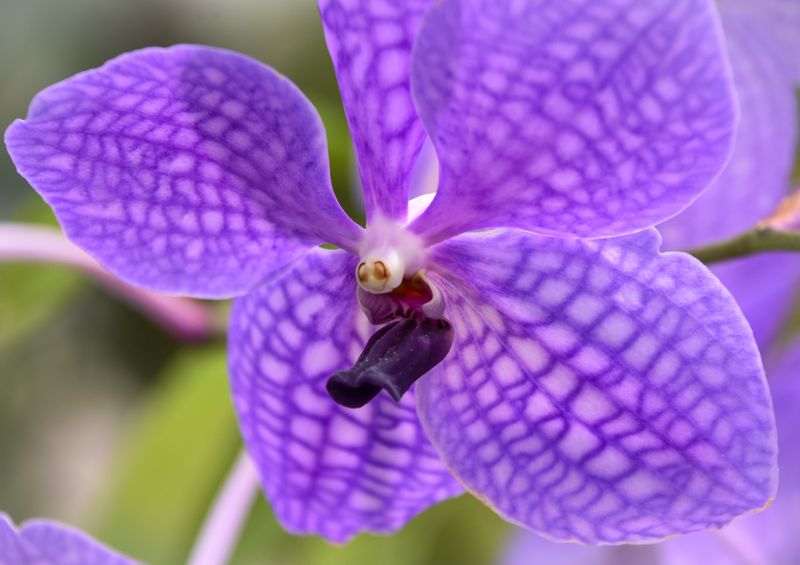
(Flower of a Vanda orchid, Orchid Room, Jindai Botanical Gardens.)
Another creature-like curio in the Orchid Room are the Dracula orchids. While the Dracula legend came out of eastern Europe, the Dracula orchids here are native to South America. And the flower actually looks more like a monkey than it does the world’s most famous vampire.
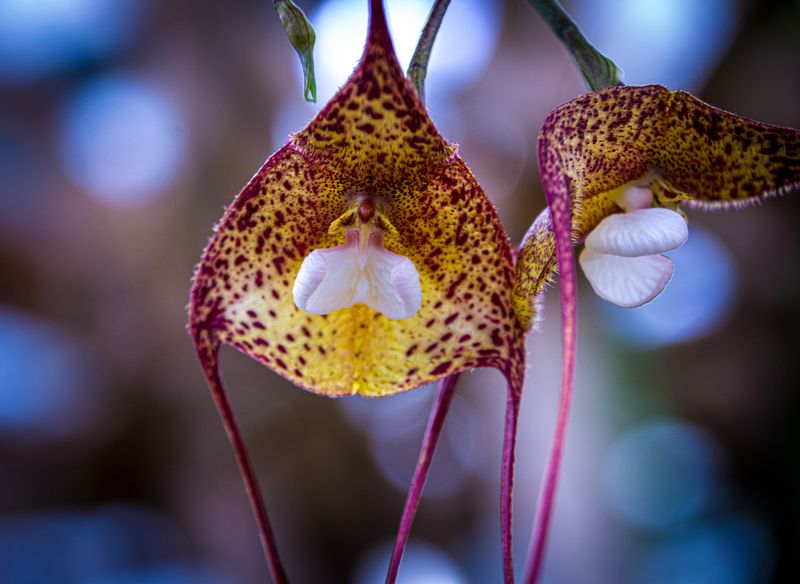
(Flower of the Dracula orchid, Orchid Room, Jindai Botanical Gardens.)
Fierce competition in the rainforest
“There is fierce competition among plants in the rainforest,” reads a line from one of the English-language explanation signs inside the greenhouse. The “competition” is to attract potential pollinators, often through eye-catching flowers. This seems like good news for most Large Greenhouse visitors then as it means there’s plenty here to marvel at. We did say “most visitors” for a reason though, because some of the plants here like to eat those visitors that get too close.
Yes, do you remember when your elementary school teacher sent your mind into a spin by telling you about plants that eat insects and small rodents? Well, no need to dig out your old school notebooks from the attic, the plants are here. Among a collection of carnivorous plants in the Large Greenhouse Tropical Room are species from the Nepenthes genus. The Nepenthes have leaves in the form of bags. Handy for catching insects!
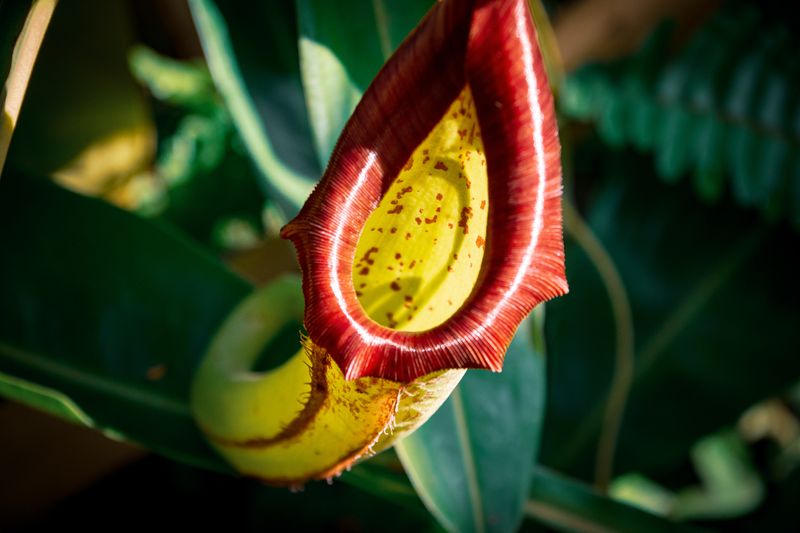
(Leaf of a carnivorous plant, Tropical Room, Jindai Botanical Gardens.)
Much cuter is the Acalypha hispida (below), native to the West Indies. The plant's small flowers have no petals and arrange themselves on its stem-like inflorescence, which can grow up to 50 cm in length. Another way of putting it - they look like a cat's tail!
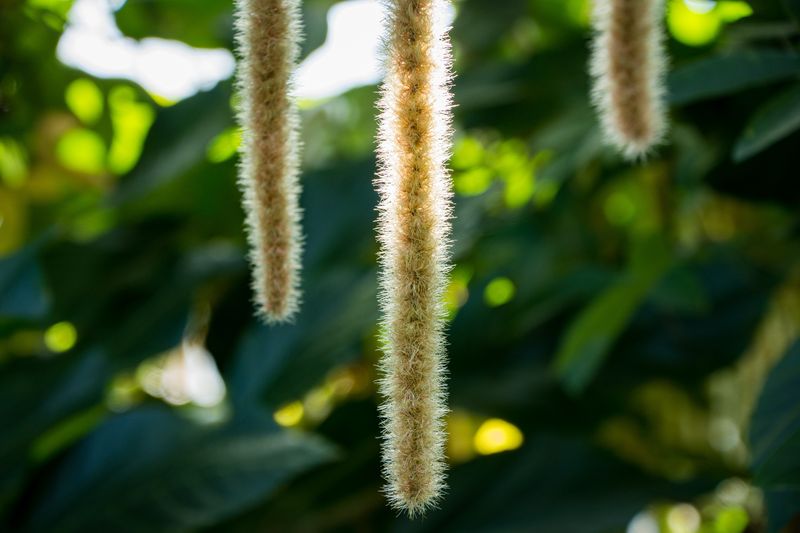
(Cat’s tail or exotic plant? Acalypha hispida, Tropical Room, Jindai Botanical Gardens.)
At the time of visiting the gardens' greenhouse, we were lucky enough to see this plant (below), native to Bolivia, South America, in bloom in the Tropical Room. The name is a tongue twister - Calliandra haematocephala. The nickname isn't. Powder Puff Tree!
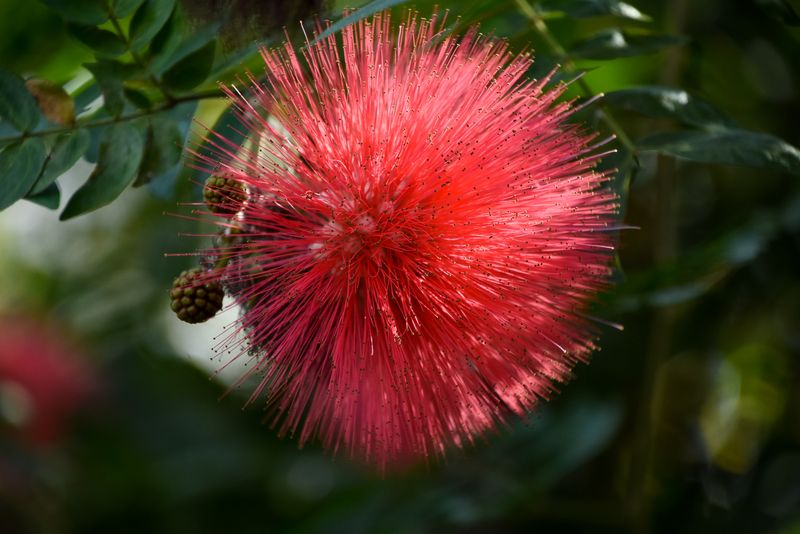
(Flower of a Powder Puff Tree, Tropical Room, Jindai Botanical Gardens.)
Beware the beast
The earlier-mentioned Titan arum is a rare beast. The plant, native to the island of Sumatra in Indonesia, is said to be one of the largest flowering plants in the world. It rarely blooms though. The Titan arum on display (at the time of visiting) in the Large Greenhouse’s Water Lily Room has been with the gardens since 2007. As of March 2022 (the time of writing), the flower has bloomed four times - in 2011, 2015, 2019 and most recently in June 2021.
The latest blooming of the flower at Jindai Botanical Gardens saw it reach a height of 249 cm by the end of June 2021. That’s up from 222 cm during its previous bloom in July 2019.
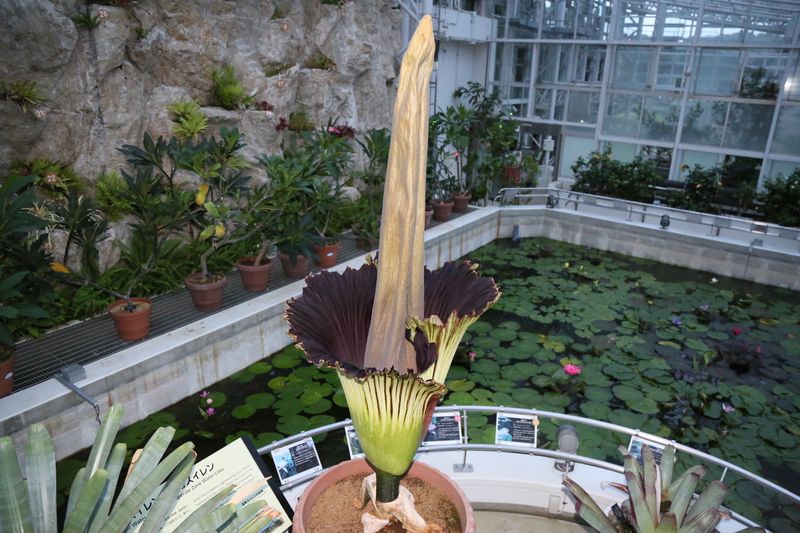
(Titan arum plant in bloom, Jindai Botanical Gardens. Picture taken on June 24, 2021.)
The Titan arum also creates a stir for the odor it emits when in bloom.
“It depends on the person but (it smells) like squid, sewage, or a garbage pile,” a member of the gardens' staff told us about the flower.
“At its peak the smell is such that it gets on your clothes and lingers with you even after you've left.”
At its most stinky the plant has also been referred to as the corpse flower, because, well, you can complete the rest of that sentence.
Perhaps then we’re glad not to have been exposed to Titan arum’s maximum odorous wrath. Or maybe we’re disappointed. We can’t be sure.
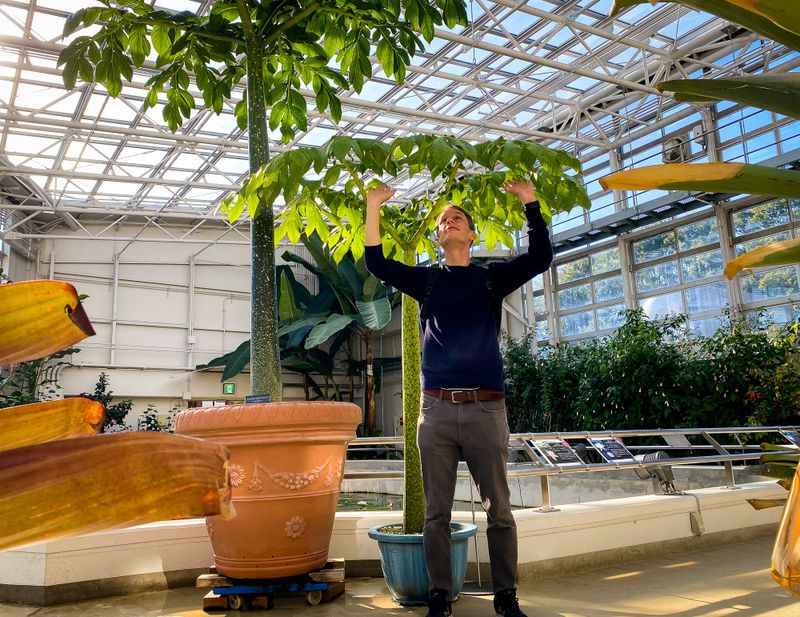
(Titan arum, a long way from blooming, Water Lily Room, Jindai Botanical Gardens.)
There are many things that are cause for surprise in the Large Greenhouse at Jindai Botanical Gardens, most of which come in the form of plants and their flowers. A remote work spot then comes as a different kind of surprise, but one that reveals the savvy of garden organizers and the efforts they go to reach out to a wide spectrum of the public.
With the culture of remote work on the rise in Japan, workspaces offering power supply and free wifi were established in the gardens in late 2021. One of them is here in the greenhouse where desks have been set up offering remote workers an eye-popping view into the colorful Begonia Room.
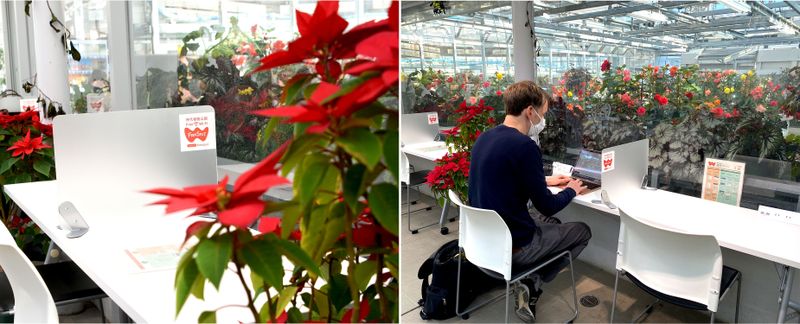
(Trying not to be distracted by the flowers! Workspace in the Large Greenhouse, Jindai Botanical Gardens.)
At the time of visiting, the more elderly of the desk occupants didn’t look like they were getting much work done, but who can blame them?!
Gardens staff speculated that this might be the first remote workspace established in a botanical gardens facility. There are currently three workspace locations in the gardens.
If the action inside the greenhouse has indeed left your head spinning, it’s perhaps fitting that the exit deposits visitors right in front of the Rose Garden. What could be more soothing and civilized than a walk among the roses, not to mention being much kinder on the nostrils than a corpse flower?
With more than 5,200 roses covering some 400 varieties blooming in spring and around 5,000 roses covering some 300 varieties blooming in autumn, the Rose Garden at Jindai Botanical Gardens justifies a reputation that has traveled far beyond Japan. In 2009, the garden was presented with the Award of Garden Excellence from the Word Federation of Rose Societies.
A large pavilion at the eastern end of the garden makes for a wonderful place to take a rest and take in a view of the plants. While the roses here are at their brilliant best around mid to late May and mid to late October, the rose-flavored ice cream from the nearby kiosk tastes brilliant year-round!
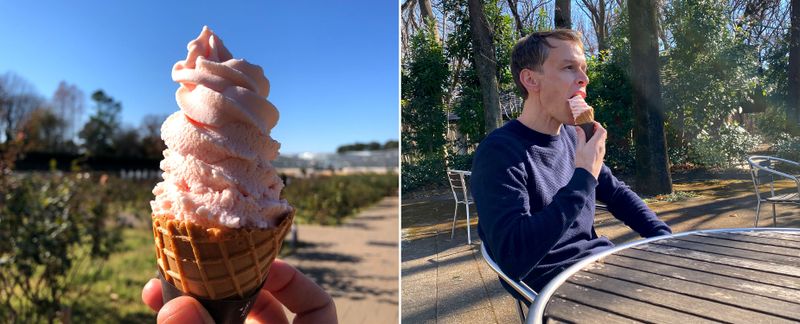
(Very civilized! Enjoying a rose ice cream in the Rose Garden, Jindai Botanical Gardens.)
In all seriousness, the Rose Garden in full bloom is one of Jindai Botanical Gardens’ most treasured sights. Drone footage commissioned by garden administrators in the spring of 2021 might show why. See the footage on the Tokyo Metropolitan Park Association YouTube channel here: https://youtu.be/9VpVSW8jGhA
The Rose Garden can also be inspected at your own pace, and from the comfort of your own home, courtesy of a virtual garden experience launched in December 2020, amid the coronavirus pandemic. “Online Rose Garden” allows virtual visitors to explore the garden and its flowers with the click of a mouse, including points of interest that can be zoomed in on, and explanations (in Japanese) of the varieties of roses on display.
Go to the Online Rose Garden: https://my.matterport.com/show/?m=pAMgcWAGCmw&f=0%29
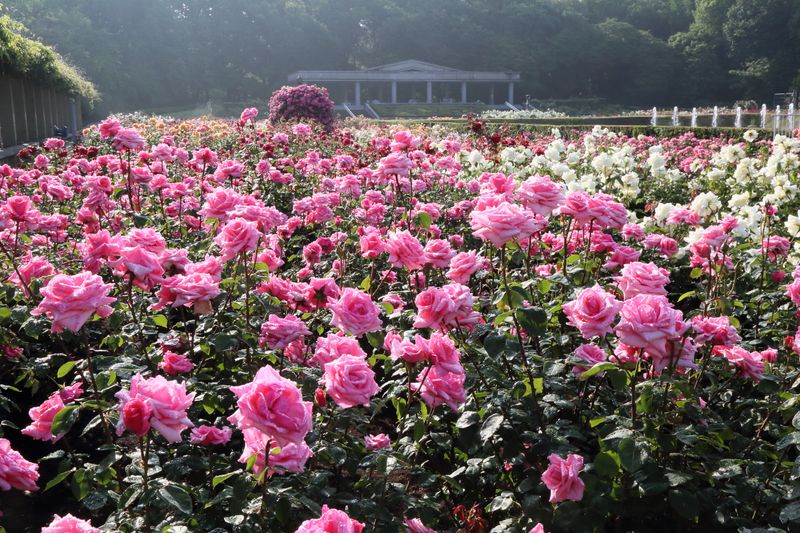
(The Rose Garden in bloom, Jindai Botanical Gardens. Photo taken on May 14, 2021.)
Outside of the Large Greenhouse, Jindai Botanical Gardens tends to dress for the season, meaning the repeat visitor is kept on their toes with new colors, shapes and events to look out for.
Over the years garden organizers have held special or one-off events, alongside seasonal staples, to try and show visitors new ways in which the gardens can be enjoyed.
In the past, these events have included viewings of meteor showers in the night sky and evening outdoor movie screenings under the stars on the large Lawn Square.
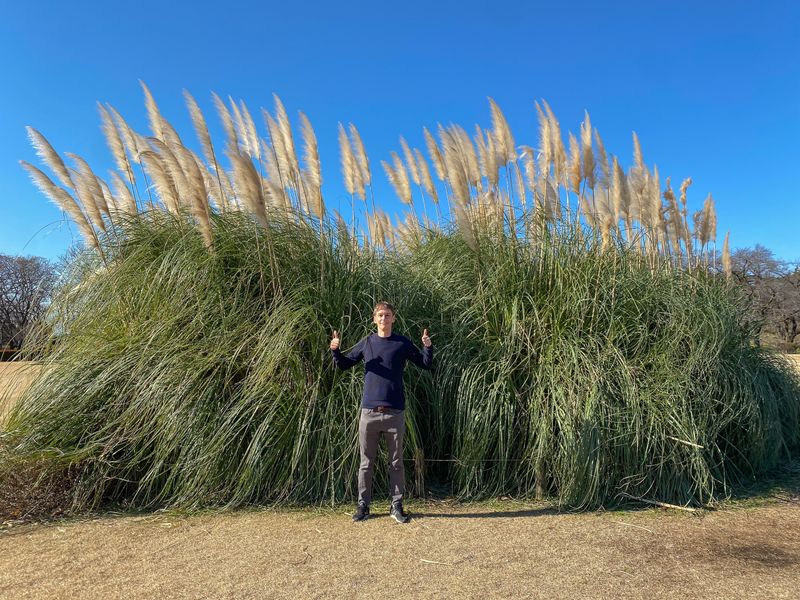
(Pampas grass on the Lawn Square where outdoor movie screenings have been held at Jindai Botanical Gardens.)
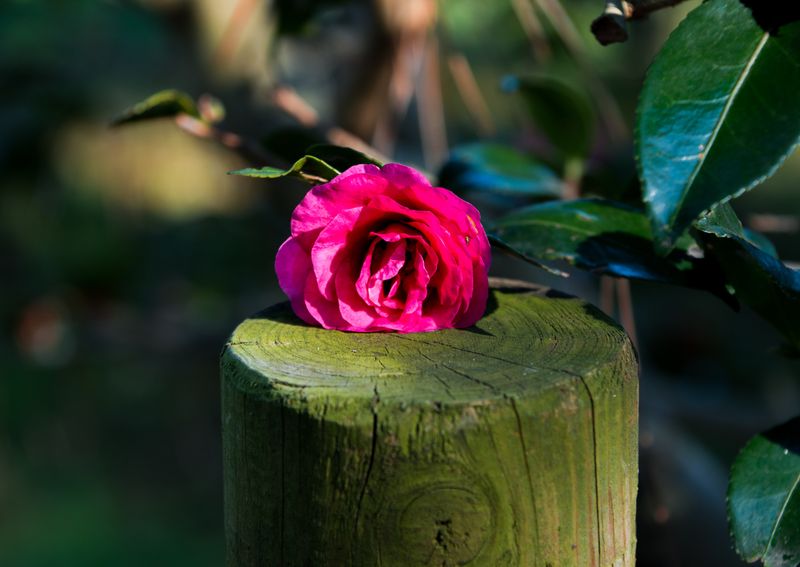
(Camellia flower taking a well-earned rest as winter approaches, Jindai Botanical Gardens.)
Our last visit to the gardens came in late-autumn.
“The autumn leaves that you can see in early December are not limited to the maple trees. Taller trees like the metasequoia and bald cypress trees in the Ebine and Hydrangea Garden are also beautiful, the way they give off a golden glow in the evening sun,” a member of staff told us as we pressed them for lesser-known seasonal highlights.
“A little later in the season, the area around the pavilion on the Tsukiyama (artificial mound), where the kuma bamboo grass grows, is also beautiful,” they said.
It can be difficult to talk about the gardens though, without mentioning its classic highlights.
“The horticultural culture that flourished during the Edo period (1603-1867) produced flowers and plants such as camellias, plums, and azaleas which were often described in classical literature. These flowers can be seen in the Camellia and Sasanqua Garden, Plum Garden and Azalea Garden, and others,” staff said.
From the tried-and-tested classics through to those that look something from the world of sci-fi, it is, in all honesty, exhausting to contemplate the sheer variety and scope of the plants that grow in Jindai Botanical Gardens.
So don’t. Pick a season, any season, and enjoy the surprise.
This article was supported by Chofu City.



0 Comments